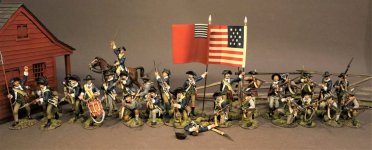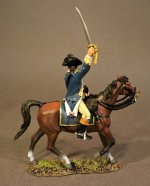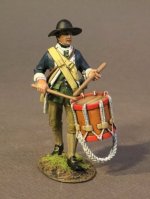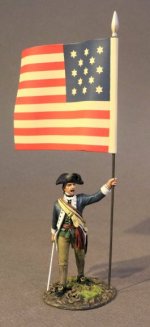NEW RELEASES FOR JUNE 2019
THE EIGHTEENTH CENTURY COLLECTION
DRUMS ALONG THE MOHAWK
THE BATTLE OF SARATOGA 1777,
ASSAULT ON THE BREYMANN REDOUBT, 7th October 1777
PLEASE NOTE that there will be a large diorama on display in the main foyer, at the NEW YORK HISTORICAL SOCIETY MUSEUM from the 4th July 2019. The display has been a collaboration between the museum and Richard Schuster.
The New-York Historical Society is an American history museum and library located in New York City at the corner of 77th Street and Central Park West on the Upper West Side of Manhattan. The society was founded in 1804 as New York's first museum. It presents exhibitions, public programs, and research that explore the rich history of New York.
There will also be a second display revealed on the 4th July 2019 which will continue through until September 2019. (This display will include new jjDesigns American War of Independence figures.) The exhibition will focus on George Washington and his late war encampment on the Hudson river.
“The surrender that changed the world”.
In October 1777, a 6,000 strong British army surrendered in defeat after the American victory at the Battles of Saratoga.
For the first time in history a British General surrendered his sword
The German mercenaries were firing steadily from their redoubt.
From the rear came the crack of rifles. A general mounted and, his sword flashing, led the riflemen into the redoubt. German resistance collapsed. The Battle of Saratoga was over.
The day was Oct. 7th, 1777. Twelve days later, “Gentleman Johnny” Burgoyne, the gifted, courageous British commander, surrendered to the American general, Horatio Gates. Thus ended the most
ambitious and dangerous offensive launched by Britain in the Revolution. The attack on the redoubt was the last of a series of actions that constituted the Battle of Saratoga, considered the turning point of the Revolution.
THE CONTINENTAL ARMY
The Continental Army was formed by the Second Continental Congress after the outbreak of the American Revolutionary War by the colonies that became the United States of America. Established by a resolution of the Congress on June 14, 1775, it was created to coordinate the military efforts of the Thirteen Colonies in their revolt against the rule of Great Britain. The Continental Army was supplemented by local militias and troops that remained under control of the individual states or were otherwise independent. General George Washington was the commander-in-chief of the army throughout the war.
The Continental Army consisted of soldiers from all 13 colonies and, after 1776, from all 13 states. When the American Revolutionary War began at the Battles of Lexington and Concord on April 19, 1775, the colonial revolutionaries did not have an army. Previously, each colony had relied upon the militia, made up of part-time citizen-soldiers, for local defense, or the raising of temporary "provincial regiments" during specific crises such as the French and Indian War of 1754–63. As tensions with Great Britain increased in the years leading to the war, colonists began to reform their militias in preparation for the perceived potential conflict. Training of militiamen increased after the passage of the Intolerable Acts in 1774. Colonists such as Richard Henry Lee proposed forming a national militia force, but the First Continental Congress rejected the idea.
The Continental Army of 1777–80 evolved out of several critical reforms and political decisions that came about when it became apparent that the British were sending massive forces to put an end to the American Revolution. The Continental Congress passed the "Eighty-eight Battalion Resolve", ordering each state to contribute one-battalion regiments in proportion to their population, and Washington subsequently received authority to raise an additional 16 battalions. Enlistment terms extended to three years or to "the length of the war" to avoid the year-end crises that depleted forces (including the notable near-collapse of the army at the end of 1776, which could have ended the war in a Continental, or American, loss by forfeit).
THE 2nd MASSACHUSETTS REGIMENT

The 2nd Massachusetts Regiment (Bailey's Regiment) was formed by consolidating the remnants of the 7th Continental Regiment; Peters' Company, 13th Continental Regiment; and Clap's Company, 21st Continental Regiment; with the remnant of the 23rd Continental Regiment. (Peters' and Clap's Companies were reorganized, respectively, as Warren's and Dunham's Companies, Bailey's Regiment). The commanding officer, Colonel John Bailey, had been the lieutenant colonel, later the colonel, of Thomas's Regiment in 1775 and colonel of the 23rd Continental Regiment in 1776. As the 23rd Continental Regiment, reorganizing as the 2rd Massachusetts Regiment, it served in Glover's Brigade at Princeton. Reorganization was completed in the spring of 1777, and the regiment was ordered to the Northern Department. In the summer of 1777 it was assigned to the 4th Massachusetts Brigade under Brigadier General Learned. The regiment retreated toward Saratoga after the American evacuation of Fort Ticonderoga in July, and marched under Arnold to the relief of Fort Stanwix in August. Following the Saratoga campaign the regiment marched south to join Washington in the Middle Department. It served in the Philadelphia campaign and wintered at Valley Forge. In 1778 it served in the Monmouth campaign. After November 1778 the regiment was stationed in the Highlands, but in 1781 its light company was assigned to Lieutenant Colonel Elijah Vose's Battalion, Corps of Light Infantry, which served in the Yorktown campaign. The regiment was disbanded at West Point, New York, on November 3, 1783.

SGEN-03
DRUMS ALONG THE MOHAWK,
THE BATTLE OF SARATOGA 1777,
BRIGADIER GENERAL EBENEZER LEARNED.
(2pcs)

Ebenezer Learned (April 18, 1728 – April 1, 1801) was a brigadier general in the American Continental Army during the Revolutionary War.
He was the son of Ebenezer and Deborah Haynes Learned, and was born at Oxford, Massachusetts, and lived his entire life in the area. On October 5, 1749, he married Jerusha Baker (1732–1789) and they had nine children. When his grandfather died in 1750, he inherited 200 acres (0.8 km²) known as Prospect Hill, and built his home there.
Learned was an active member of the local militia, and raised and drilled a company at Oxford during the French and Indian War. In the summer of 1756 he led his company to Fort Edward at Lake George. There is little record of his service, except that he served sporadically from then until 1763. He fell ill with smallpox in 1757 and was hospitalized for a month.
After that war, he remained at home for several years, farming and operating a tavern at Oxford. He was prominent in both church and community, and served as a town selectman for 25 of the years between 1758 and 1794.
He remained active in the militia, and led his own and a neighboring company of minutemen to Boston, where he received the news of the Battle of Lexington on April 19, 1775. On April 24, the Massachusetts committee of safety named him a colonel and authorized him to organize a regiment that was known as Learned's Regiment. His regiment was adopted into the Continental Army in June. In 1776 those who re-enlisted were augmented by men from Danielson's Regiment to form the 3rd Continental Regiment.
By the end of the Siege of Boston, General Washington had given Learned command of the important Dorchester Heights position. When the British evacuated Boston on March 17, 1776, Colonel Learned was the first to enter the city. He led a battalion of 500 specially selected men, to clean out the traps, abatis, caltrops, and garbage left by the British. He and the men were selected because they had all had survived smallpox or had been inoculated.
Learned resigned in May 1776 due to ill health, but returned to duty on April 2, 1777. He was named a brigadier general and assigned to the Northern Department. In the first phase of the Battle of Saratoga, the Battle of Freeman's Farm, his brigade was not very effective. Working forward in the center of the line, they mainly got lost in the woods, and exchanged light fire near the end of the battle.
At the Battle of Bemis Heights his brigade was in the center of the left division, fighting alongside Daniel Morgan and Enoch Poor. They were commanded by General Benjamin Lincoln. Learned's own brigade (the 2nd, 8th, and 9th Massachusetts line), was expanded by James Livingston's 1st Canadian Regiment and 2 regiments of New Hampshire Militia the 2nd and 4th. The attack on the American far left was turned by Daniel Morgan's men, but the enemy's center was held by Hessian troops. Benedict Arnold came onto the field and encouraged the men. Arnold and Learned led a joint charge on the Hessian positions, and, even though Arnold fell wounded, Learned and his men carried through and broke the enemy lines. Burgoyne's forces had to retreat to their starting fortifications around Freeman's Farm. When their charge carried the first bunker, Burgoyne's forces withdrew to the positions they had held before the Freeman's Farm battle.
After Saratoga, his was the first unit to guard and escort the surrendered Convention Army on its trek to the south. In 1777–78, he commanded a brigade of Massachusetts troops in Major General deKalb's division at Valley Forge. On March 24, 1778, his continuing health problems led to his final resignation.
THE EIGHTEENTH CENTURY COLLECTION
DRUMS ALONG THE MOHAWK
THE BATTLE OF SARATOGA 1777,
ASSAULT ON THE BREYMANN REDOUBT, 7th October 1777
PLEASE NOTE that there will be a large diorama on display in the main foyer, at the NEW YORK HISTORICAL SOCIETY MUSEUM from the 4th July 2019. The display has been a collaboration between the museum and Richard Schuster.
The New-York Historical Society is an American history museum and library located in New York City at the corner of 77th Street and Central Park West on the Upper West Side of Manhattan. The society was founded in 1804 as New York's first museum. It presents exhibitions, public programs, and research that explore the rich history of New York.
There will also be a second display revealed on the 4th July 2019 which will continue through until September 2019. (This display will include new jjDesigns American War of Independence figures.) The exhibition will focus on George Washington and his late war encampment on the Hudson river.
“The surrender that changed the world”.
In October 1777, a 6,000 strong British army surrendered in defeat after the American victory at the Battles of Saratoga.
For the first time in history a British General surrendered his sword
The German mercenaries were firing steadily from their redoubt.
From the rear came the crack of rifles. A general mounted and, his sword flashing, led the riflemen into the redoubt. German resistance collapsed. The Battle of Saratoga was over.
The day was Oct. 7th, 1777. Twelve days later, “Gentleman Johnny” Burgoyne, the gifted, courageous British commander, surrendered to the American general, Horatio Gates. Thus ended the most
ambitious and dangerous offensive launched by Britain in the Revolution. The attack on the redoubt was the last of a series of actions that constituted the Battle of Saratoga, considered the turning point of the Revolution.
THE CONTINENTAL ARMY
The Continental Army was formed by the Second Continental Congress after the outbreak of the American Revolutionary War by the colonies that became the United States of America. Established by a resolution of the Congress on June 14, 1775, it was created to coordinate the military efforts of the Thirteen Colonies in their revolt against the rule of Great Britain. The Continental Army was supplemented by local militias and troops that remained under control of the individual states or were otherwise independent. General George Washington was the commander-in-chief of the army throughout the war.
The Continental Army consisted of soldiers from all 13 colonies and, after 1776, from all 13 states. When the American Revolutionary War began at the Battles of Lexington and Concord on April 19, 1775, the colonial revolutionaries did not have an army. Previously, each colony had relied upon the militia, made up of part-time citizen-soldiers, for local defense, or the raising of temporary "provincial regiments" during specific crises such as the French and Indian War of 1754–63. As tensions with Great Britain increased in the years leading to the war, colonists began to reform their militias in preparation for the perceived potential conflict. Training of militiamen increased after the passage of the Intolerable Acts in 1774. Colonists such as Richard Henry Lee proposed forming a national militia force, but the First Continental Congress rejected the idea.
The Continental Army of 1777–80 evolved out of several critical reforms and political decisions that came about when it became apparent that the British were sending massive forces to put an end to the American Revolution. The Continental Congress passed the "Eighty-eight Battalion Resolve", ordering each state to contribute one-battalion regiments in proportion to their population, and Washington subsequently received authority to raise an additional 16 battalions. Enlistment terms extended to three years or to "the length of the war" to avoid the year-end crises that depleted forces (including the notable near-collapse of the army at the end of 1776, which could have ended the war in a Continental, or American, loss by forfeit).
THE 2nd MASSACHUSETTS REGIMENT

The 2nd Massachusetts Regiment (Bailey's Regiment) was formed by consolidating the remnants of the 7th Continental Regiment; Peters' Company, 13th Continental Regiment; and Clap's Company, 21st Continental Regiment; with the remnant of the 23rd Continental Regiment. (Peters' and Clap's Companies were reorganized, respectively, as Warren's and Dunham's Companies, Bailey's Regiment). The commanding officer, Colonel John Bailey, had been the lieutenant colonel, later the colonel, of Thomas's Regiment in 1775 and colonel of the 23rd Continental Regiment in 1776. As the 23rd Continental Regiment, reorganizing as the 2rd Massachusetts Regiment, it served in Glover's Brigade at Princeton. Reorganization was completed in the spring of 1777, and the regiment was ordered to the Northern Department. In the summer of 1777 it was assigned to the 4th Massachusetts Brigade under Brigadier General Learned. The regiment retreated toward Saratoga after the American evacuation of Fort Ticonderoga in July, and marched under Arnold to the relief of Fort Stanwix in August. Following the Saratoga campaign the regiment marched south to join Washington in the Middle Department. It served in the Philadelphia campaign and wintered at Valley Forge. In 1778 it served in the Monmouth campaign. After November 1778 the regiment was stationed in the Highlands, but in 1781 its light company was assigned to Lieutenant Colonel Elijah Vose's Battalion, Corps of Light Infantry, which served in the Yorktown campaign. The regiment was disbanded at West Point, New York, on November 3, 1783.

SGEN-03
DRUMS ALONG THE MOHAWK,
THE BATTLE OF SARATOGA 1777,
BRIGADIER GENERAL EBENEZER LEARNED.
(2pcs)

Ebenezer Learned (April 18, 1728 – April 1, 1801) was a brigadier general in the American Continental Army during the Revolutionary War.
He was the son of Ebenezer and Deborah Haynes Learned, and was born at Oxford, Massachusetts, and lived his entire life in the area. On October 5, 1749, he married Jerusha Baker (1732–1789) and they had nine children. When his grandfather died in 1750, he inherited 200 acres (0.8 km²) known as Prospect Hill, and built his home there.
Learned was an active member of the local militia, and raised and drilled a company at Oxford during the French and Indian War. In the summer of 1756 he led his company to Fort Edward at Lake George. There is little record of his service, except that he served sporadically from then until 1763. He fell ill with smallpox in 1757 and was hospitalized for a month.
After that war, he remained at home for several years, farming and operating a tavern at Oxford. He was prominent in both church and community, and served as a town selectman for 25 of the years between 1758 and 1794.
He remained active in the militia, and led his own and a neighboring company of minutemen to Boston, where he received the news of the Battle of Lexington on April 19, 1775. On April 24, the Massachusetts committee of safety named him a colonel and authorized him to organize a regiment that was known as Learned's Regiment. His regiment was adopted into the Continental Army in June. In 1776 those who re-enlisted were augmented by men from Danielson's Regiment to form the 3rd Continental Regiment.
By the end of the Siege of Boston, General Washington had given Learned command of the important Dorchester Heights position. When the British evacuated Boston on March 17, 1776, Colonel Learned was the first to enter the city. He led a battalion of 500 specially selected men, to clean out the traps, abatis, caltrops, and garbage left by the British. He and the men were selected because they had all had survived smallpox or had been inoculated.
Learned resigned in May 1776 due to ill health, but returned to duty on April 2, 1777. He was named a brigadier general and assigned to the Northern Department. In the first phase of the Battle of Saratoga, the Battle of Freeman's Farm, his brigade was not very effective. Working forward in the center of the line, they mainly got lost in the woods, and exchanged light fire near the end of the battle.
At the Battle of Bemis Heights his brigade was in the center of the left division, fighting alongside Daniel Morgan and Enoch Poor. They were commanded by General Benjamin Lincoln. Learned's own brigade (the 2nd, 8th, and 9th Massachusetts line), was expanded by James Livingston's 1st Canadian Regiment and 2 regiments of New Hampshire Militia the 2nd and 4th. The attack on the American far left was turned by Daniel Morgan's men, but the enemy's center was held by Hessian troops. Benedict Arnold came onto the field and encouraged the men. Arnold and Learned led a joint charge on the Hessian positions, and, even though Arnold fell wounded, Learned and his men carried through and broke the enemy lines. Burgoyne's forces had to retreat to their starting fortifications around Freeman's Farm. When their charge carried the first bunker, Burgoyne's forces withdrew to the positions they had held before the Freeman's Farm battle.
After Saratoga, his was the first unit to guard and escort the surrendered Convention Army on its trek to the south. In 1777–78, he commanded a brigade of Massachusetts troops in Major General deKalb's division at Valley Forge. On March 24, 1778, his continuing health problems led to his final resignation.




